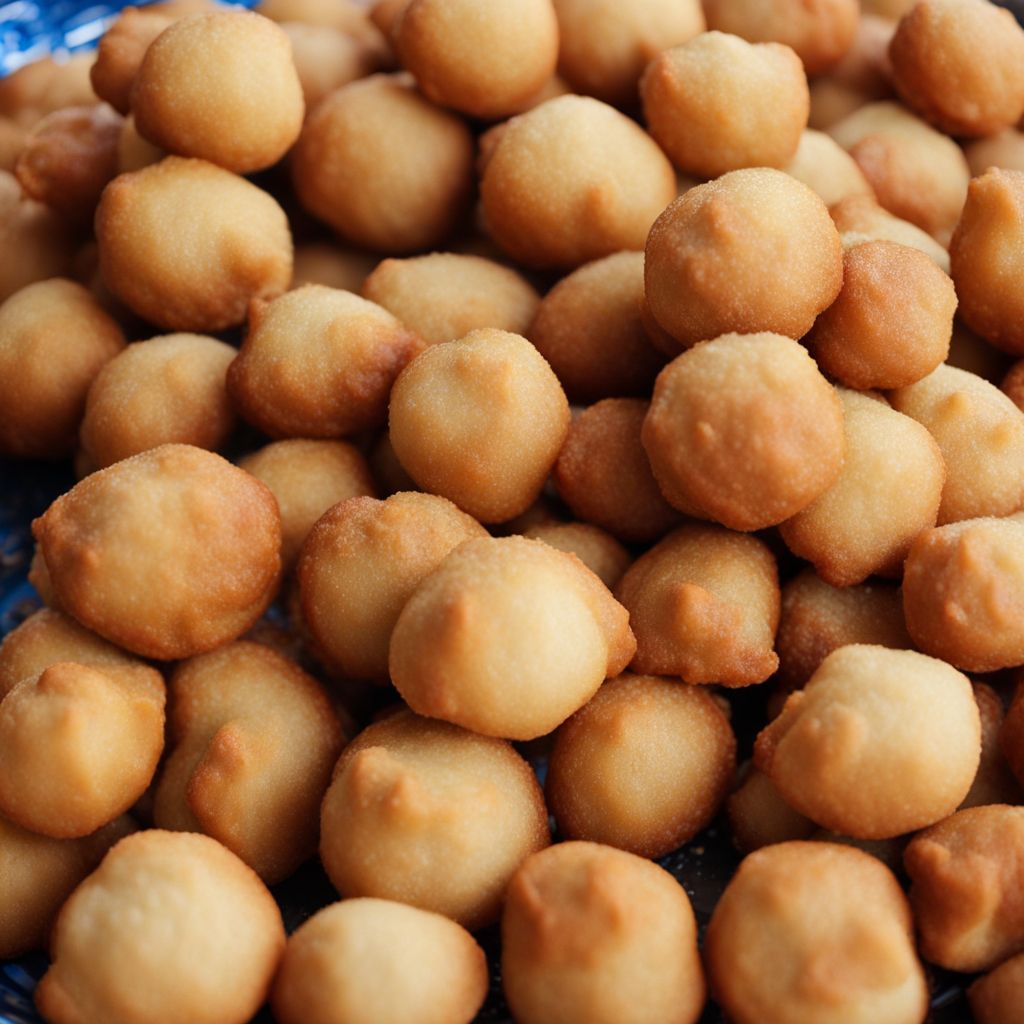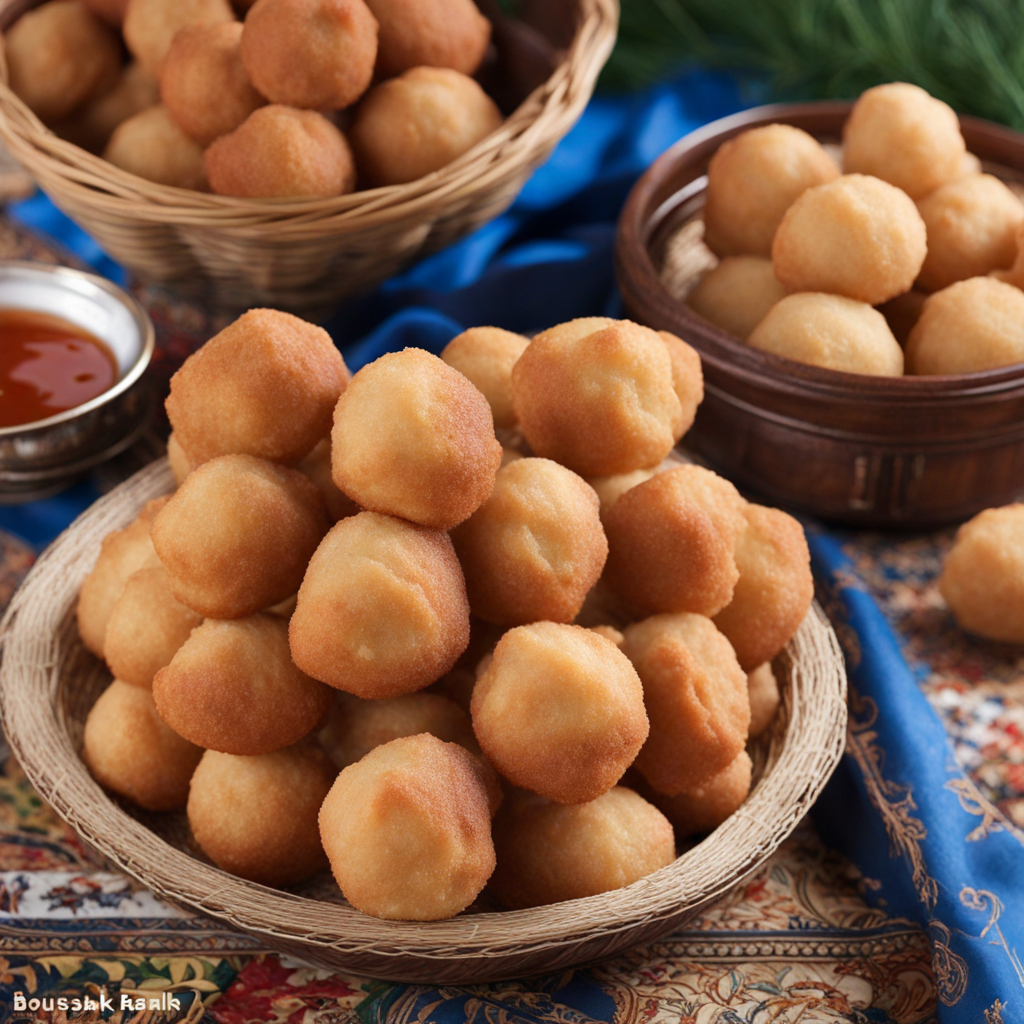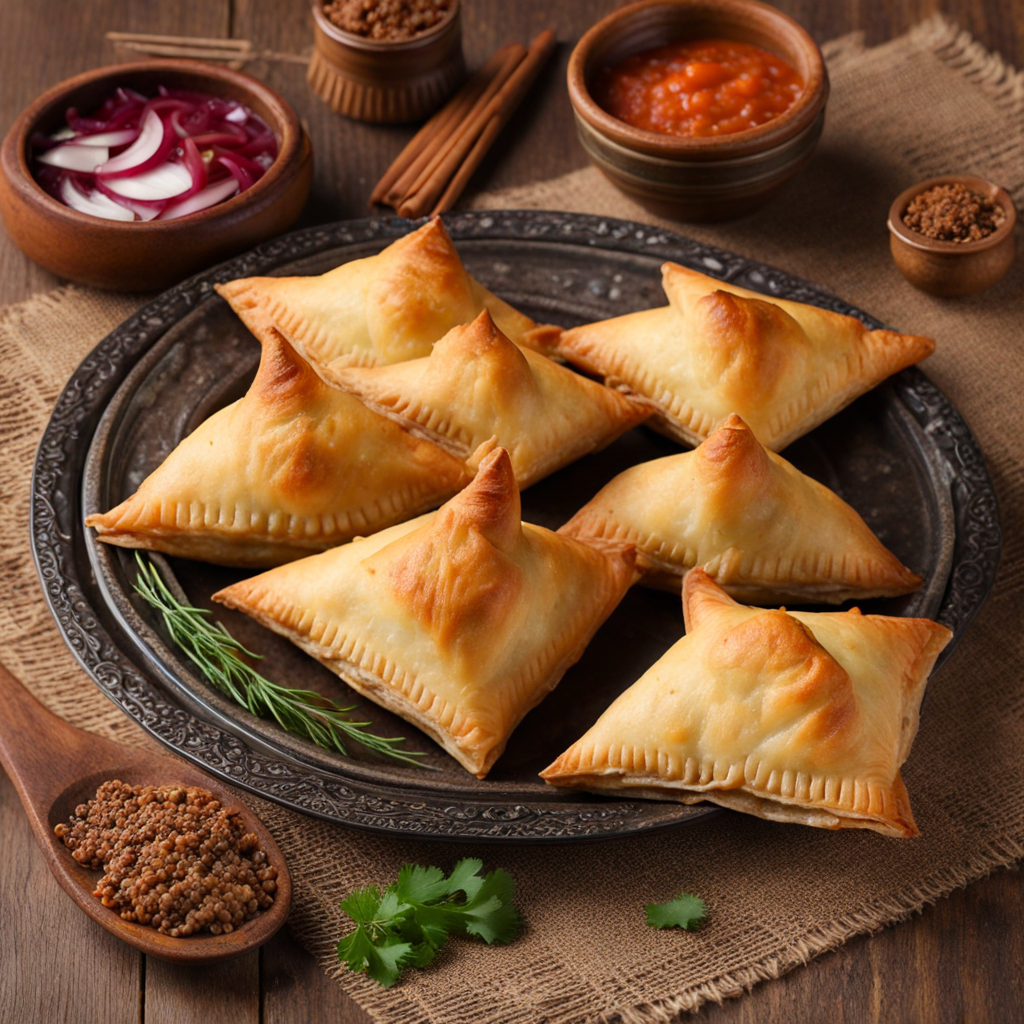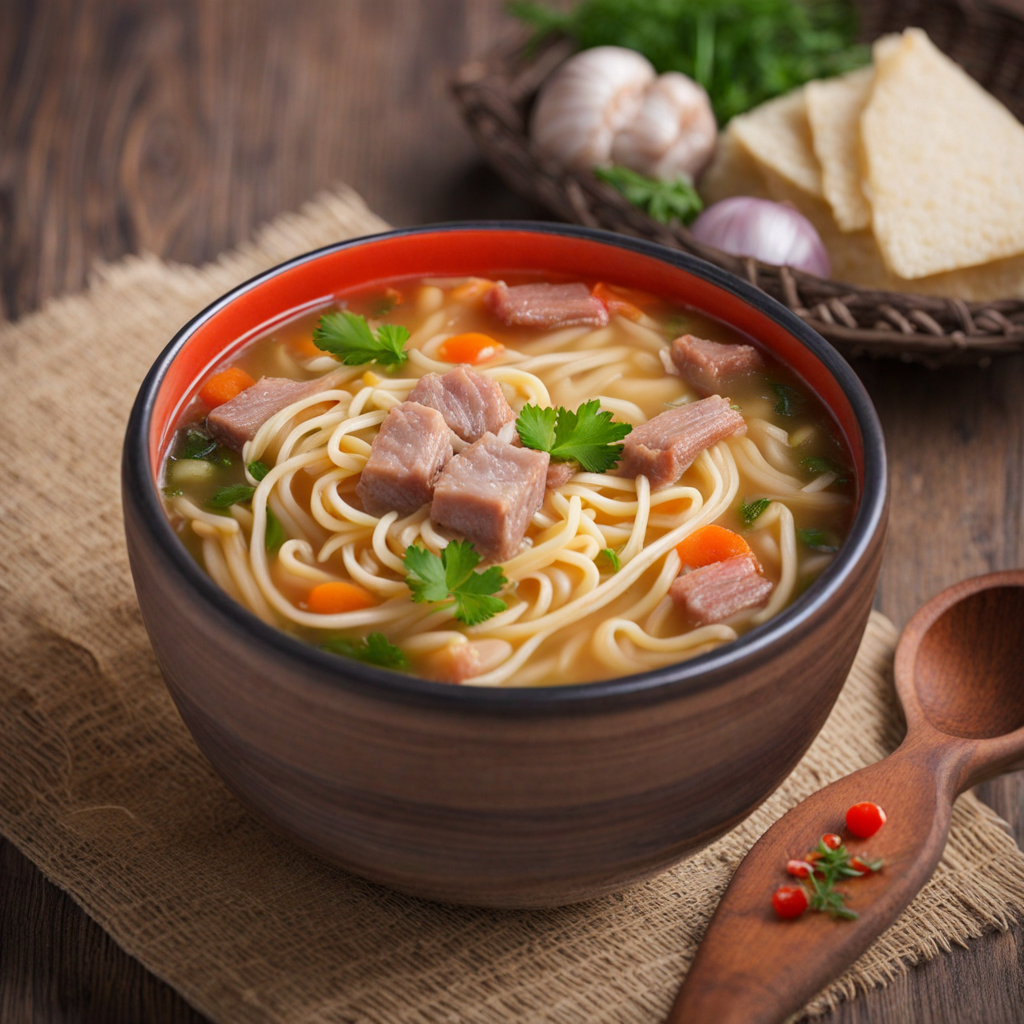Baursak
Baursak is a traditional Kazakh pastry that delivers a delightful experience through its unique texture and flavor. These small, deep-fried dough balls are known for their golden-brown crust and soft, fluffy interior, which melts in your mouth. The dough is made from simple ingredients like flour, yeast, sugar, and milk, resulting in a subtly sweet base that perfectly complements both savory and sweet accompaniments. When you bite into a warm baursak, you can expect a satisfying contrast between the crispy exterior and the tender, airy center, making it an irresistible treat for both young and old alike. In Kazakhstan, baursak holds a special place in the hearts of locals, often served during family gatherings, celebrations, and special occasions. They are typically enjoyed with tea or as a side dish with hearty meals, showcasing their versatility. Some variations may include different flavors or fillings, such as sweet fruit jams or savory meats, allowing for a range of experiences with each bite. The aroma of freshly fried baursak wafting through the air is enough to draw anyone in, beckoning you to take part in this beloved culinary tradition. What makes baursak truly special is the cultural significance it carries. Eating baursak is often associated with hospitality and generosity, symbolizing warmth and community. Sharing these delightful pastries with friends and family fosters connections and creates lasting memories. As you explore the flavors of Kazakhstan, indulging in baursak is not just about tasting a delicious pastry; it’s about embracing the traditions and stories woven into each bite, making it an essential part of your culinary journey.
How It Became This Dish
Origin of Баурсақ Баурсақ, also known as baursak, is a traditional fried dough snack from Kazakhstan and is deeply rooted in the culinary practices of the nomadic peoples of Central Asia. Its origins can be traced back to the early Turkic tribes, who relied on simple, portable foods that could be easily prepared and consumed while traveling across vast steppes. The basic ingredients of baursak—flour, water, yeast, and salt—are staples that were readily available, making it an accessible food choice for these early communities. The dough is typically shaped into small balls or squares and then deep-fried until golden brown. The method of preparation aligns with the nomadic lifestyle, as the dough can be made quickly and cooked over an open flame. Over centuries, baursak has evolved into a symbol of hospitality and celebration in Kazakh culture, often served at special occasions such as weddings, holidays, and family gatherings. Cultural Significance In Kazakhstan, baursak is not merely a snack; it embodies the spirit of community and hospitality. The act of offering baursak to guests is a longstanding tradition that signifies warmth and welcome. It is often presented alongside tea, particularly during social gatherings, where it serves as a bridge between generations, connecting the past with the present. The cultural importance of baursak extends beyond its role in hospitality. It is a key component of various rituals and celebrations. For instance, during the Nauryz festival, which marks the spring equinox and the beginning of the new year in the Persian calendar, baursak is prepared in abundance. It symbolizes renewal and the joy of new beginnings, making it an essential part of the celebratory feast. Additionally, baursak is often used in traditional Kazakh ceremonies. At weddings, for example, it is a common practice to serve baursak to guests as a sign of good fortune and blessings for the newlyweds. This reinforces the idea that food is not just sustenance but a means of conveying goodwill and cultural values. Development Over Time The preparation and presentation of baursak have transformed over the years, reflecting the influences of globalization and modernization. While the traditional recipe remains the foundation, contemporary variations have emerged, incorporating different flavors and ingredients. Some have experimented with fillings, such as sweetened cottage cheese or fruit, while others have introduced spices like cinnamon or cardamom to enhance the flavor profile. In urban areas, the convenience of modern cooking methods has also led to adaptations in how baursak is prepared. While traditionalists may still favor the deep-frying method, many people now opt for baking or air frying as healthier alternatives. Despite these changes, the essence of baursak remains unchanged; it continues to be a beloved food that evokes nostalgia and a sense of belonging among the Kazakh people. Furthermore, the globalization of food culture has seen baursak gaining recognition beyond Kazakhstan. As the diaspora expands, more people are introduced to this delightful snack, and it has begun to appear in various international food festivals and culinary events. This has not only popularized the dish but also sparked interest in Kazakh cuisine as a whole, encouraging a greater appreciation for its rich flavors and traditions. Regional Variations While baursak is primarily associated with Kazakhstan, similar fried dough snacks can be found throughout Central Asia, each with its unique twist and name. In Uzbekistan, for instance, a similar dish called “lepeshka” is popular, while in Kyrgyzstan, you can find “boorsok.” Each variation reflects the local ingredients, cooking methods, and cultural practices, showcasing the shared culinary heritage of the region. These regional variations also highlight the adaptability of baursak as a dish. In different contexts, it may be served differently—sometimes as a sweet treat, other times as a savory accompaniment to meat or soup. This flexibility has allowed baursak to maintain its relevance across generations and geographies, further solidifying its place in Central Asian cuisine. Modern Interpretations In recent years, the revival of interest in traditional foods has prompted chefs and home cooks alike to explore innovative takes on baursak. Social media platforms have played a pivotal role in sharing recipes and ideas, leading to a resurgence of homemade versions infused with creativity. The incorporation of modern culinary techniques, such as using gluten-free flour or alternative sweeteners, reflects a broader trend towards healthier eating without compromising the essence of the dish. Moreover, baursak has found its way onto the menus of modern cafes and restaurants, where it is often paired with gourmet fillings or served as part of fusion dishes. This evolution demonstrates the versatility of baursak and its ability to transcend cultural boundaries while still retaining its traditional roots. In the context of global cuisine, baursak serves as a reminder of the importance of heritage and the stories that food can tell. As it continues to evolve, baursak remains a beloved symbol of Kazakh culture, a testament to the enduring bonds of family, community, and tradition. Conclusion In summary, baursak is more than just a delicious fried dough snack; it is a reflection of Kazakhstan’s rich history and cultural identity. From its origins among nomadic tribes to its significance in modern celebrations and culinary adaptations, baursak has woven itself into the fabric of Kazakh life. Its continued popularity and evolution signify the resilience of cultural traditions in the face of changing times, ensuring that this cherished food will remain a part of Kazakhstan’s culinary landscape for generations to come.
You may like
Discover local flavors from Kazakhstan







